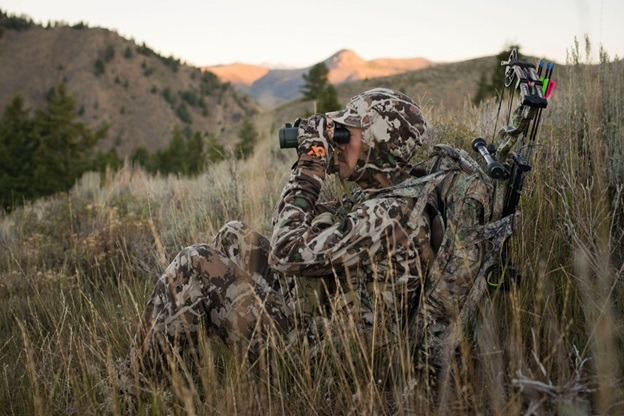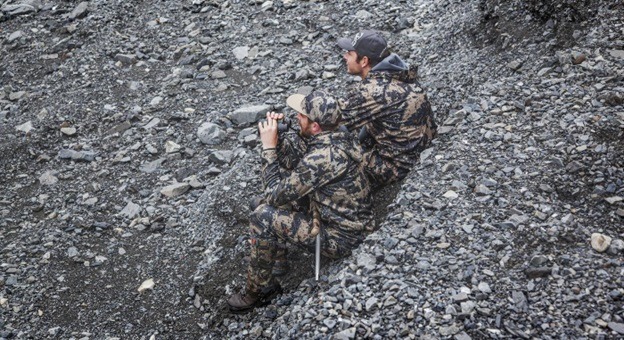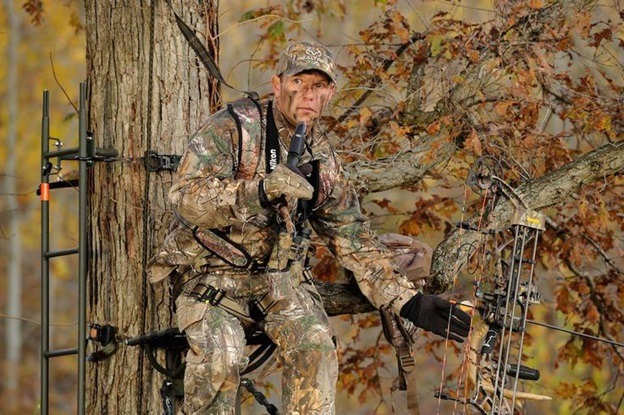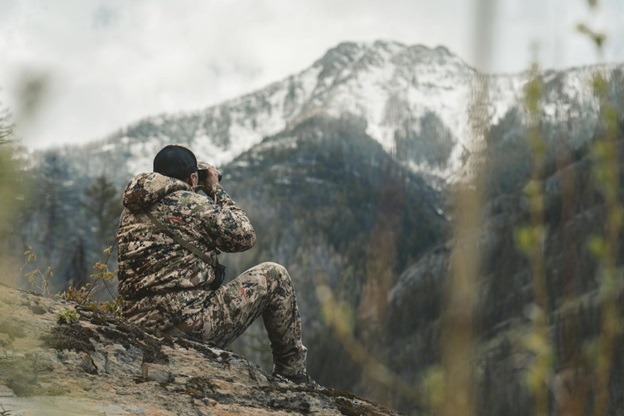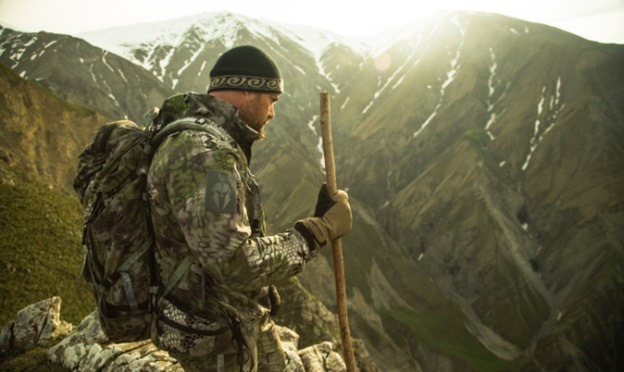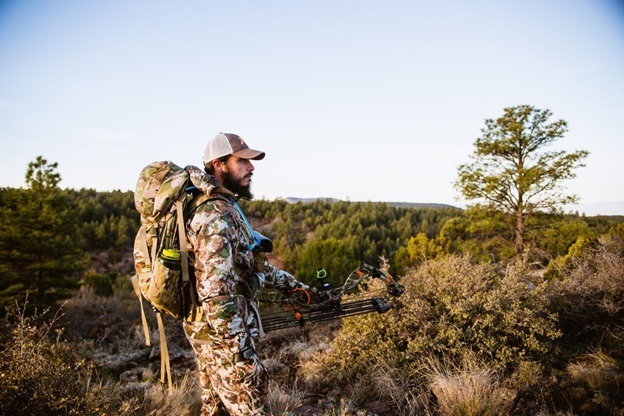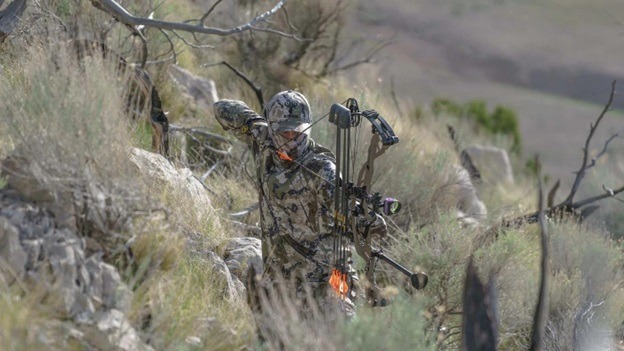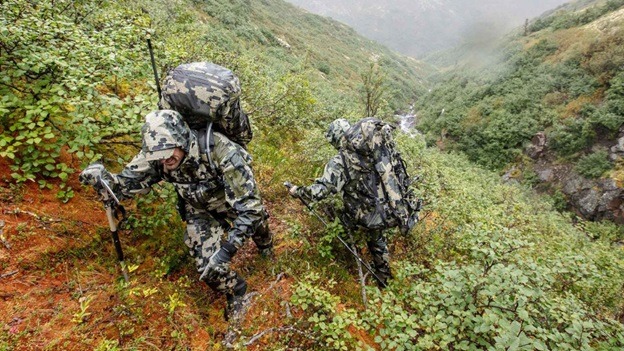Beginner deer hunters have many questions, and a fair share of them are related to hunting clothes and, particularly, deer hunting camouflage. What features should my hunting apparel have? What’s the best camo pattern for deer hunting? Which companies make the best camo for deer hunting?
In this article, we’re going to address all these questions, explain what camo you need for your tasks, and recommend some brands that make deer hunting camouflage clothing that delivers.
Mimicry vs. Break-up Camo for Deer Hunting
You may have noticed that all hunting camouflage can be broken down into two distinctive categories – mimicry and break-up. Mimicry camo contains photorealistic images of leaves, branches, bark, reed, etc., and is intended to pass you off as something you are not. Break-up camouflage works in a slightly different way: depicting abstract shapes and contrasting color spots, it breaks up your human outline.
So what type of camo to choose? Well, to answer this question, we need to understand how deer perceive the environment through vision.
First of all, deer have rather mediocre eyesight. They are red-green color blind, which means these colors appear to deer as different shades of gray. By the way, for this reason, many states require hunters to wear blaze orange for safety. Visual clarity is also poor – more or less distant objects come blurry to them.
When a deer tries to identify a potential threat, it matches up the silhouette it has detected in the field with its knowledge of the human shape or a shape of any other danger, and once these two agree in its mind, it turns back and flees. Since visual clarity is reduced, deer don’t focus on details but rather on contrasts.
Based on the difference between the two types of hunting camo patterns we’ve learned, we can assume that break-up camouflage makes more sense because it’s intended to disrupt the human outline. But don’t be so hasty. Let’s also consider different hunting methods.
Choosing Camo Based on Hunting Method and Weapon
Deer inhabit various landscapes, from flat country with high grass to dense woods to mountains. Therefore hunters can practice diverse hunting styles based on the predominant type of terrain: spot-and-stalk, tree stand, ambush, etc. Camouflage recommendations will be different for each one.
Imagine yourself on a tree stand. During the early and mid season, tree crowns aid much in breaking up your silhouette. Add the right mimicry camo and naturally limited range of movement, and now you’re invisible. During the late season, snow camo depicting naked branches against white background intended to match with snow and sky will also work.
Though ideal for certain conditions, mimicry camo has one major drawback. A minimal mismatch may come visible to a deer and cause it to flee. The environment is changing all the time. So when you go with mimicry camouflage, you limit your opportunities.
On the other hand, break-up camo works in a wider range of deer hunting scenarios. The only thing you need to consider is the distance to the target. For example, spot-and-stalk bowhunting implies close-quarter engagement (generally, within 20-40 yards) and, thus, requires ultimate concealment achieved with the help of micro break-up camo. Firearms provide a much longer effective range. Therefore, a spot-and-stalk rifle or shotgun hunter will need a break-up camo with macro patterns.
What about long-range hunting within 200-400 yards? Well, hunters pulling triggers on deer at such a distance don’t need camouflage at all because it doesn’t make any decisive contribution.
So let’s sum up. Besides accounting for the terrain (predominant colors and elements of your location), you need to consider the killing distance and hunting method. Stand hunting means you won’t be moving too much, which minimizes the risks of being spotted by a deer. In this case, mimicry camouflage may work, though most hunters still use break-up camo. For active types of hunting, such as spot-and-stalk, break-up camo is a must-have. Micro-patterns are ideal for bowhunters, while macro-patterns work better at 50 yards and farther.
Best Deer Hunting Camo Brands
Sitka
Sitka is one of the most well-known hunting camo brands in the U.S. and globally. The company is renowned for its inventive use of GORE-TEX and proprietary patterns developed through science. Watching other companies making camouflage based on how the human eye experiences color, Sitka took another approach and asked animal vision experts to aid in developing patterns that actually work. The hard work of Sitka enthusiasts and U.S. scientists resulted in the best camouflage possible.
Sitka camo patterns are optimized for a particular terrain and method. Elevated II with high-contrast micro and macro patterns echoing the bright sky and shaded foliage underside is perfect for late-season tree-stand hunters. Open Country is designed for rocky terrain. And Subalpine will be ideal for spot-and-stalk and ambush hunts.
Sitka hunting clothing is made for unparalleled comfort and has excellent moisture-wicking and temperature regulation properties.
Kryptek
Kryptek is known for making military-grade camouflage for all backcountry scenarios, including deer hunting. While military-grade? Because the company’s clothes are created by military veterans who know for sure what camo must look like to make you invisible to the prey’s eye.
Kryptek rigorously tests all its camo patterns using laser-retinal tracking provided by the U.S. Department of Defense. According to the company info, it takes longer for the system to locate people wearing Kryptek hunting camo.
Deer hunters will appreciate the Obskura series of patterns, as well as Altitude and Highlander.
First Lite
First Lite is another hunting clothing brand specializing in technical deer hunting camo offered in plenty of whitetail-specific patterns. The company’s most versatile patterns are Fusion, Cipher, and Specter, and according to the info, they were carefully designed to provide concealment no matter the terrain, season, and proximity. Such versatility of use is achieved through large regions of light and dark colors mixed with scattering small- and medium-sized elements organized to confuse the prey’s focal vision and depth perception.
First Lite has developed several technologies to make the best performance clothing. As such, 37.5 technology is responsible for effective temperature regulation and scent capture, while Aerowool is basically lightweight merino wool used in First Lite base layers.
King’s Camo
King’s Camo specializes in effective mimicry camouflage but also has break-up patterns, like XK7 and KC Ultra. XK7 suits western low arid desert elevations and rocky terrains and uses seven macro and micro textures and shapes that keep you concealed no matter the distance.
Mimicry patterns of King’s Camo hunting clothing include Desert Shadow, Mountain Shadow, and Snow Shadow, as well as Realtree’s Edge and Excape.
Kuiu
Kuiu camo is valued for high-contrast disruptive patterns and comfort-ensuring technologies that make clothing breathable, weatherproof, warm, and quick-drying. The Valo pattern works best in open terrains lacking cover – tundras, sage and underbrush flat country, and dormant hardwoods. For evergreen terrains with abundant vegetation, Verde will be ideal. The Vias macro-pattern is visually best for late-season environments and rocky landscapes.

